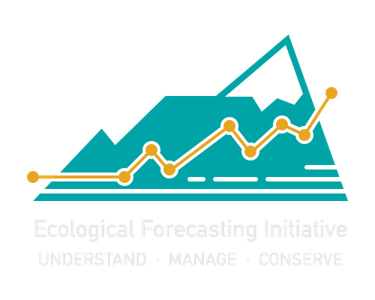About us#
We are an interdisciplinary, multi-institutional collaboration with the goal to increase equitable access to earth and environmental data science graduate pathways for Native American students. Our project involves developing, testing, and supporting culturally-centered environmental data science curriculum for classrooms, labs, and workshops via online modules and educational resources. Materials have been developed for Indigenous students with beginner level coding skills, and we encourage instructors with non-Indigenous students to be thoughtful and respectful about using the material.
Contact us#
Interested in learning more or getting involved? Want to use material, host a workshop, or collaborate on new material? Contact us! Email Dr. Rachel Torres at Rachel.Torres@humboldt.edu
Our collaborations#
Ecological Forecasting Initiative: The Ecological Forecasting Initiative (EFI) is a grassroots consortium aimed at building and supporting an interdisciplinary community of practice around near-term (daily to decadal) ecological forecasts. EFI’s consortium aims to improve not only the science of ecological forecasting but also improve communication and collaboration by sharing resources, such as this compilation of educational resources.
Geoscience Alliance is a national alliance of individuals committed to broadening the participation of Native Americans, Alaska Natives, and people of Native Hawai’ian ancestry in the geosciences. Its members are faculty and staff from Tribal Colleges, universities, and research centers; Native elders and community members; industry and corporate representatives; students (K12, undergraduate, and graduate); formal and informal educators; and other interested individuals.
Victoria Thomson, an Albert Einstein Distinguished Educator Fellow with USGS and high school science teacher.
Christine Martin, PhD Candidate at Montana State University
R for environmental indigenous data science 2024 is licensed under Creative Commons Attribution 4.0 International
This project is supported by the Alfred P. Sloan Foundation.

